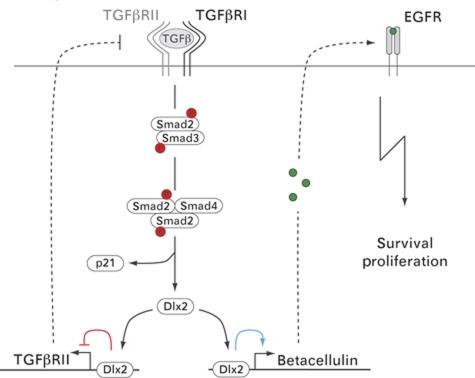Figure 7.
A working model of the molecular mechanisms underlying Dlx2-mediated resistance to TGFβ-induced cell-cycle arrest and apoptosis. Binding of TGFβ to TGFβ receptors induces phosphorylation and activation of the receptor-associated signal transducers Smad2/3. Activated Smad2/3 form a trimeric complex with Smad4 and enter the nucleus to induce expression of TGFβ target genes, such as Dlx2 and the cell-cycle inhibitor p21CIP1. Subsequently, Dlx2 directly binds and represses transcription of the TGFβRII gene (red line) and directly binds and activates expression of the gene for the EGFR-ligand betacellulin (blue line). Reduced TGFβRII expression results into diminished Smad2/3 activation, reduced Smad4 transcriptional activity and, finally, into an attenuation of cytostatic TGFβ signalling. On the other hand, increased expression of betacellulin leads to the activation of EGFR-mediated signal transduction and to cell proliferation and survival.

